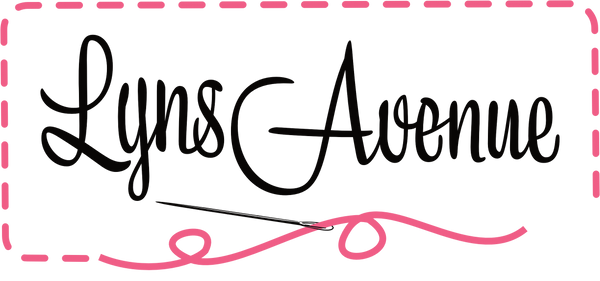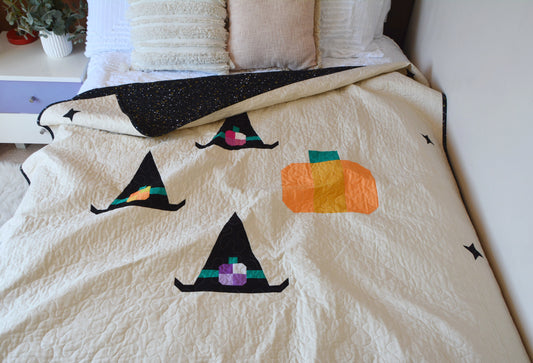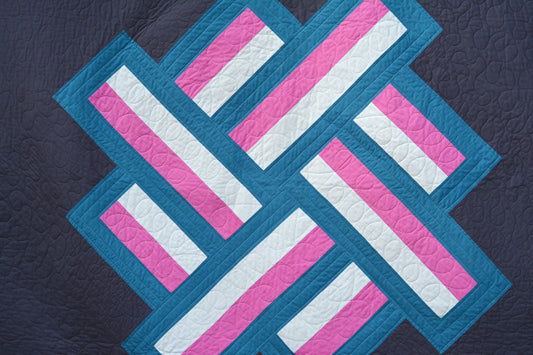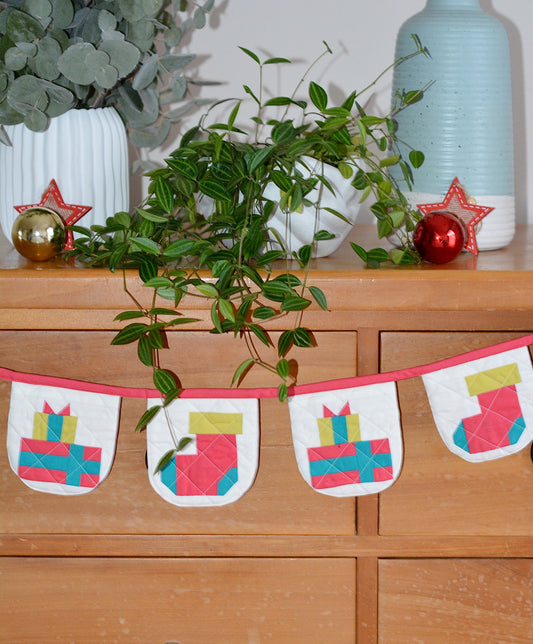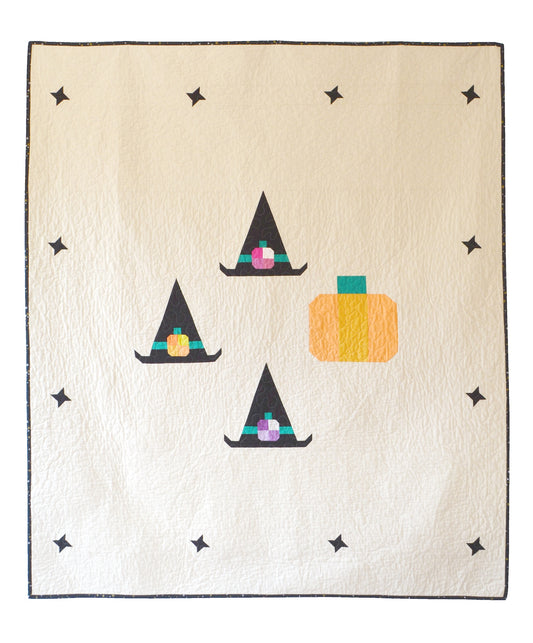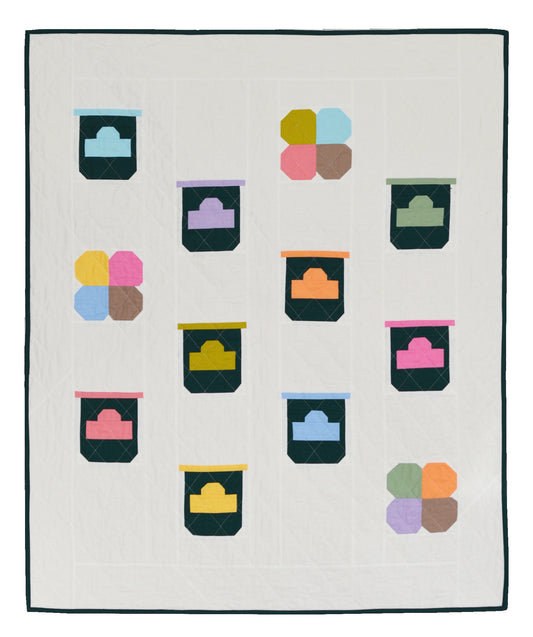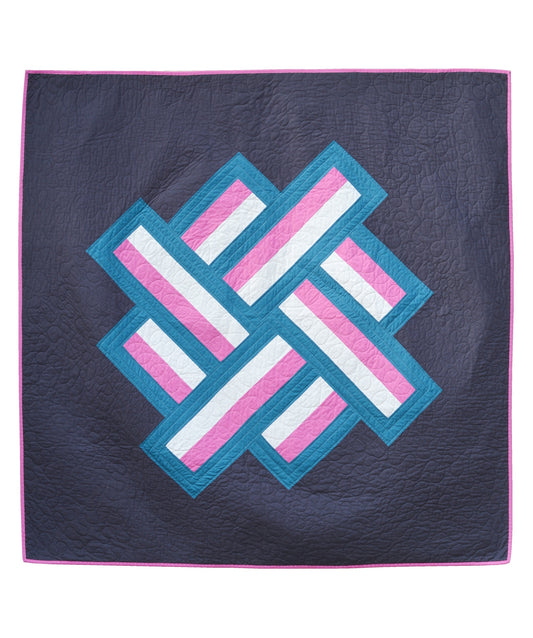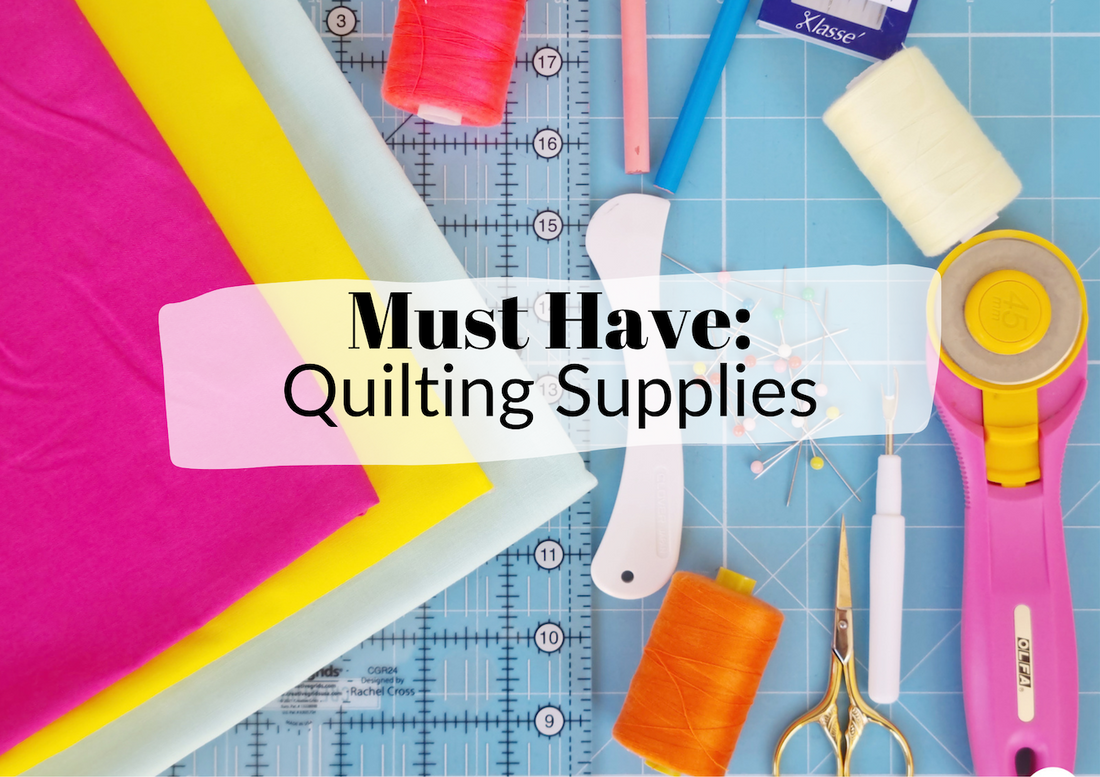
Must Have Quilting Supplies: Quilting Toolbox Essentials for Quilters
Share

This post may contain affiliate links. I may receive a commission through purchases made through links from this post.
Hey there Quilty friend, today l'm going to share with you, my must have quilting supplies or tools that l use most often and have helped improve my quilting game. I am sharing these in case they are helpful to any of you.
Let's get started!
Sewing Machine

Pictured above is a Juki sewing machine
First thing's first, you need a sewing machine. You do not need to go all out on one and spend an arm and a leg on it. You just need a basic machine to get you started. My first machine was a small Janome that l bought almost 20yrs ago and did the quilting job just fine. Once l realised l'm in too deep with this quilting and could afford to get a bigger machine l went for a Juki 2000, pictured above. This was just over two years ago. I love that it has an extension table which has been a great help in moving the heavy quilt when quilting. I had done some research prior to upgrading my machine and discovered that l could get a seperate extension table for my little Janome, so that is something you could consider doing for your machine.
Presser Feet


Quarter Inch Foot

Darning Foot or Embroidery Foot

Walking Foot
Along with the sewing machine, these three feet are my most used and have really upped my sewing game. Now you may be wondering what presser feet am l talking about? I'm talking about the walking foot, quarter inch foot and the darning or embroidery foot. The quarter inch foot lives on my machine most of the time. I use it to piece my blocks and l tell you what, once l started using this foot, the accuracy of my seams improved a lot.
I use my walking foot almost as much l do the quarter inch foot. Most of the times it is when quilting, straight lines of course, or joining my diagonal seams when making binding. I find the walking foot to be most helpful when quilting as it moves the thick layers of your quilt sandwich smoothly. I use the walking foot as my general go to foot when l do not have to sew quarter inch seams.
The darning or embroidery foot comes out to play when l want to do free motion quilting other than that it does not come out to play as often as the other two.
Fabric

Pictured above are some beautiful colourful quilting fabrics
Fabric oh fabric how l love thee. I love buying fabric and spending quality time just admiring and petting it. I am however, making a conscious decision to use said fabric instead of adding more and more to the pile. I love solids and have settled on a handful of colours to use so that my spending does not get out hand. I love to buy my fabric in yardage as l feel l'm getting more for my dollars. You can buy your fabrics pre-cut to certain sizes, for example, in fat quarters, strips or charm square packs whatever tickles your fancy.
Pictured above is cotton batting
Batting or wadding is the thick fluffy layer that goes in between your quilt top and quilt back. The meat between the sandwich so to speak. There are different kinds of batting, 100% cotton, 100% wool, bamboo, polyester, cotton-polyester blends. My go to is the 100% cotton batting as l find it warm and breathable especially for a bed quilt.
Thread

Pictured above is sewing thread
Pictured above are straight pins

Pictured above are machine needles
Pins are a must have for me to help keep my quilt pieces together when sewing. I do not tend to use them when joining straight pieces but they are an absolute must when joining pieces with seams. Using pins helps to match seams and avoid the quilt blocks from moving out of place when sewing and end up with a misaligned quilt top.
Your sewing machine will need good needles to use for your beautiful quilt projects. I use the ones pictured above or universal ones that are a fit for my machine. So check your machine guide to know which ones to buy and stock up if you can.

Pictured above are cutting mats
These two are best buddies. You can't use the rotary cutter without the cutting mat unless you want to destroy your table or your blade. The rotary cutter makes cutting your quilt pieces a breeze and allows you to have clean cuts when cutting your fabrics. Just be careful not to slice your fingers as that blade is very sharp. I use a 45mm for absolutely everything, l find that it is a good all rounder rotary cutter.
For my cutting mat, l use the 24" x 36" self-healing cutting mat. l find that this is a good size to have and is especially most helpful when cutting yardage. The self-healing mat magically repairs itself and can you can never see all those cuts you make over and over again however, you do need to make sure you're rotating your mat. I would recommend a mat no smaller than an 18" x 24" to help you slice and dice your blocks nicely without fighting for space. Self-healing mats last for a long time, mine is 9 years old and still going strong.
Quilting Rulers + a Dress Maker One

Pictured above are quilting rulers
There are many different quilt rulers in all shapes and sizes. So if you have to have one ruler, make it the 6 1/2" x 24 1/2". This is my absolute favourite, must have and go to ruler when cutting my quilt pieces, as it is very versatile in cutting from small to large pieces and squaring your quilts.
That L-shaped ruler pictured above is a dressmakers square ruler l purchased many moons ago when l wanted to make clothes. I now use it to square off my quilts and it works a charm.
Pictured above is a seam ripper
The Ripper is my frenemy. We have a love hate relationship with each other. It takes joy in showing up uninvited and spending quality time together even when not needed. In saying all this, the seam ripper is an awesome must have quilting tool we should all have as it helps unpick those unwanted stitches in a much quicker way. So do keep it close and make friends with it as we can't run away from it.
You've heard or read all those wonderful memes about the wrath if one dares to touch your fabric scissors. Well that is true, you want to make sure you keep your fabric scissors to be used for exactly that, fabric, and nothing else. As you can see l'm a tad bit extra when it comes to me and my fabric scissors. I'm glad to report that this sticky note right here has saved my beautiful scissors and everyone else from the hell that is paper or the wrath to come if used for paper…ha!
Snips or embroidery scissors are very handy dandy essential quilting supplies to have in your quilting toolbox. They are very handy to have by your sewing machine ironing board or cutting table, to easily reach out to when needing to cut those pesky fraying threads when sewing, pressing, anytime really. I have a few of those as they are very easy to lose but am guaranteed l can always find one.
Basting Tools

Pictured above are curved safety pins

Basting a quilt also known as making a quilt sandwich is never fun for me but it's gotta be done right. You need to use something to hold your three layers together (top, batting and backing) aka quilt sandwich whilst quilting. You can use a variety of quilting tools to help making basting your quilt easier;
- quilting pins if l do not have my basting spray handy. I love the curved pins as l find the curves makes it easier to pin the three layers together.
- basting spray/glue which is a temporary fabric adhesive. I personally like to use basting spray as l find this a much quicker basting process.
- needle and thread by making big stitches to hold all three layers together.
Marking Tools

Pictured above is the Dressmakers Pencils, Table Knife, Hera Marker

Pictured above is the Quilting Guide attached to the Walking Foot
My quilting repertoire is not huge and l tend to do more straight line quilting. For this, after basting my quilt, l need to mark my quilt lines to help keep things in check and even and not end up with unwanted wavy and wonky lines. My go to line marker is the Hera Marker or the blunt side of a table knife if the marker has disappeared under my pile of stuff. I used to/ still do from time to time use my dressmaker's pencils or just go with my quilting guided attached to my walking foot.
Iron and ironing board

I absolutely do not love ironing my clothes but when it comes to quilting, l'm happy to stand by my iron and press away. Always iron your fabric pre-cutting to remove the creases and press your seams for a nice flat quilt top.

This list is in no way exhaustive and will most likely by dynamic and change as l grow in my quilting journey. You probably know all this if you're already a quilter but l hope l have helped you in some way if you're new to quilting. What are some of your must having quilting tools or supplies that make your quilting journey easier? Let me know in the comments below, it may just turn out to be another essential supply added to my quilting toolbox too.
